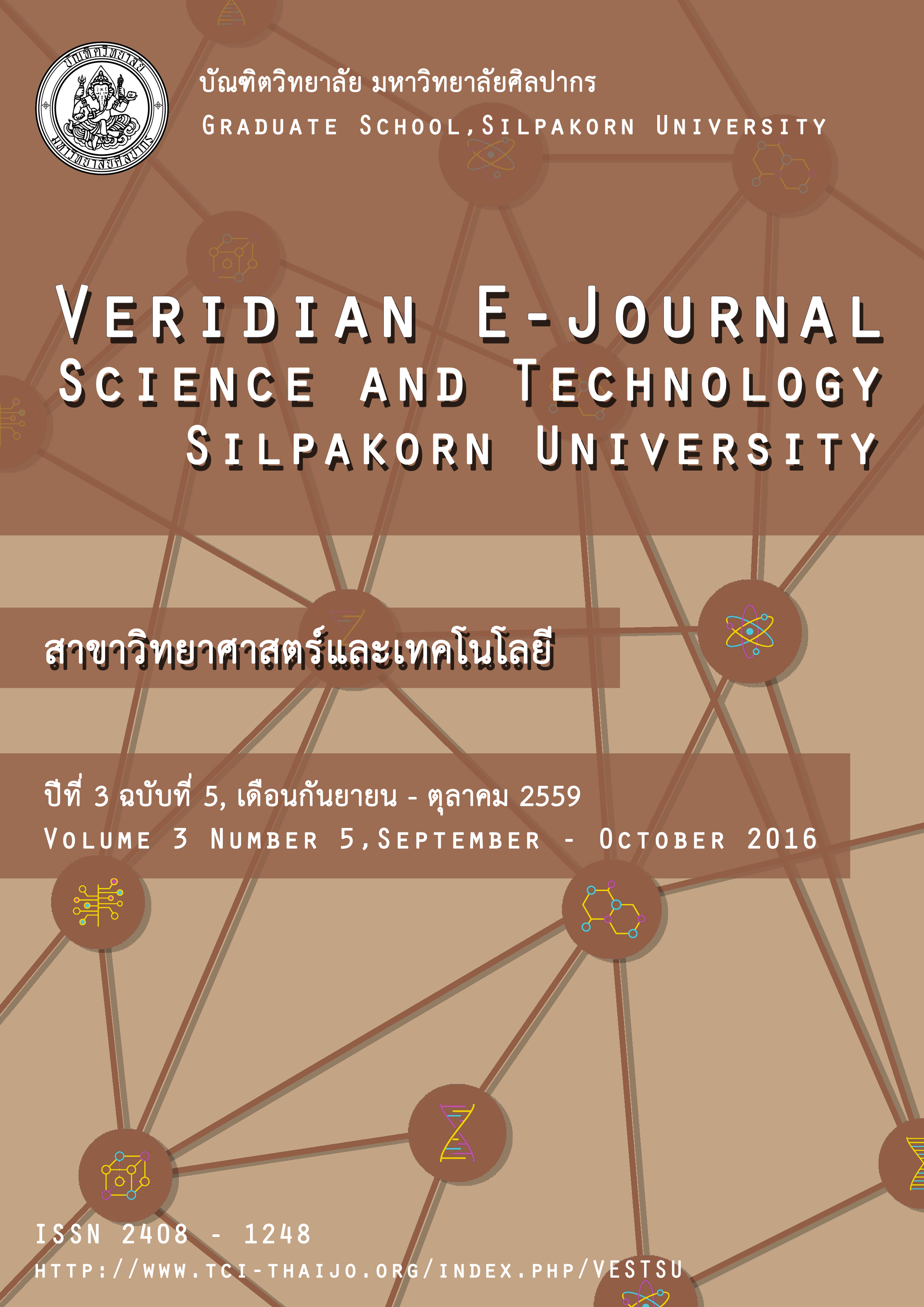การเตรียมเส้นใยเซลลูโลสจากเส้นใยมะพร้าวด้วยกระบวนการเคมีเพื่อใช้เป็นสารเสริมแรง
Main Article Content
Abstract
การเตรียมเส้นใยเซลลูโลสที่มีเส้นผ่านศูนย์กลางขนาดไมครอน จากเส้นใยมะพร้าวสามารถทำได้โดยใช้ 30 % (v/v) H2O2 ทำปฏิกิริยาที่อุณหภูมิ 90 °C เป็นเวลา 2 ชั่วโมงและ 5% (w/v) NaOH ทำปฏิกิริยาที่อุณหภูมิ 90 °C เป็นเวลา 1 ชั่วโมง จากเทคนิค SEM และ FT-IR แสดงให้เห็นว่าลิกนินและเฮมิเซลลูโลสถูกกำจัดออกจากเส้นใยซึ่งลักษณะเส้นใยที่ได้มีเส้นผ่านศูนย์กลางของเส้นใยเท่ากับ 18 ไมโครเมตร และมีความยาวเส้นใยเท่ากับ 1154 ไมโครเมตร จากผลการทดสอบด้วยเทคนิค XRD พบว่าความเป็นผลึกของเส้นใยที่สกัดได้มีความเป็นผลึกมากขึ้นเมื่อเทียบกับเส้นใยมะพร้าวที่ไม่ได้ผ่านกระบวนการด้วยสารเคมี นอกจากนี้จากผลการทดสอบด้วย FT-IR ยืนยันว่าพื้นผิวเส้นใยเซลลูโลสถูกปรับปรุงพื้นผิวด้วย 3-(Trimethoxysily)propylmethacrylate (MPS) นอกจากนี้วัสดุผสมระหว่างพอลีเอทิลลีนความหนาแน่นสูง (HDPE) และเส้นใยเซลลูโลสที่ปรับพื้นผิวด้วย MPS มีสมบัติเชิงกลที่ดีกว่า HDPE และ HDPE ที่ผสมเส้นใยเซลลูโลสที่ไม่ได้ปรับปรุงพื้นผิว
Microfibril cellulose was successfully prepared by chemically treating brown coconut fiber. The coconut fiber was treated with 30 % (v/v) H2O2 solution, and then treated with 5% (w/v) NaOH solution. The effect of these treatments on the microstructure and surface functional group of fibers was studied using SEM, XRD and FT-IR techniques, respectively. The SEM results showed that the chemical treatment could remove the hemicelluloses and lignin on the surface of coconut fiber and separated into microfibril cellulose. The microfibril cellulose diameter was 18 µm, and then length of microfibril was 1154 µm. The XRD results showed that the crystallinity of cellulose increased when treated with chemicals. The FT-IR results confirmed the reduction of impurities content on the surface by chemical treatment. The microfibril cellulose was modified the surface by using 3-(Trimethoxysily)propylmethacrylate (MPS) before mixed with high density polyethylene (HDPE) and confirmed by FT-IR technique. In addition, the mechanical properties of the silane treated cellulose-HDPE composite were studied. As expected, the mechanical properties of the cellulose-HDPE composites prepared using MPS displayed good mechanical performances.

